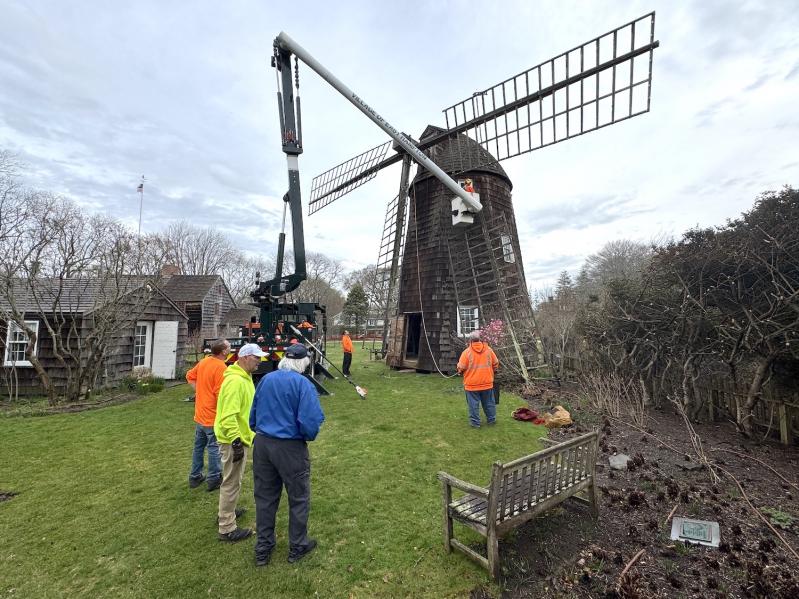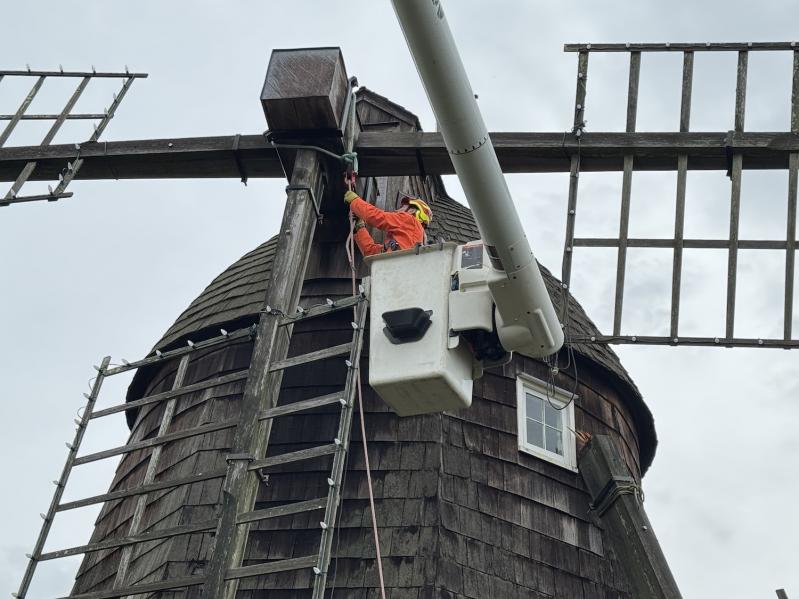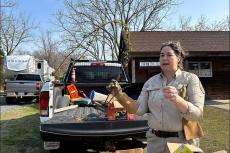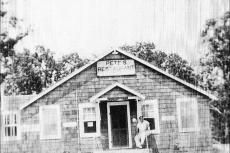One of the four arms at the historic Pantigo Mill, behind the Home, Sweet Home Museum on East Hampton’s James Lane, fell off last Thursday.
The broken arm was first discovered by the Rev. Benjamin Shambaugh of St. Luke’s Episcopal Church on his morning walk Friday.
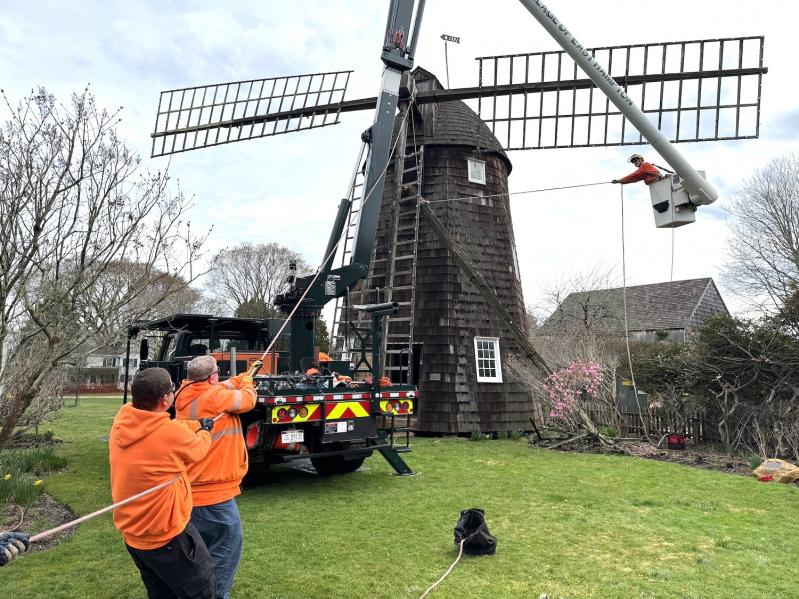
“It was 6:30 in the morning. Not light yet, but not dark dark,” he said. “The lights were still on the windmill even though one of the whole wings was hanging off.”
He immediately texted Stacy Myers, the educational director of the East Hampton Historical Society.
In no time, the village’s Department of Public Works was on scene.
“The first thing they did was cut off the electricity. I didn’t even think of the lights as a fire hazard. I just thought they were beautiful,” said Mr. Shambaugh.
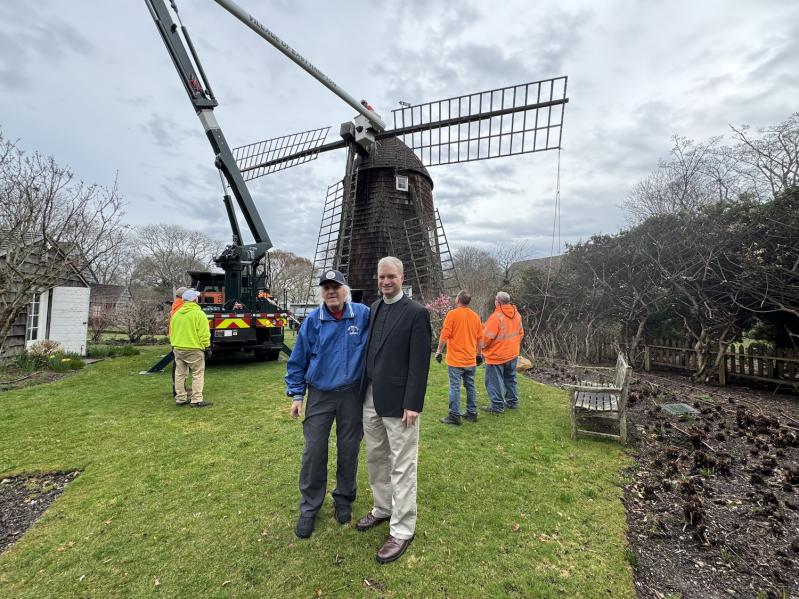
Dave Collins, the village’s superintendent of public works, said there was no timeline for repair. “We’re in contact with a contractor who is working on a windmill project at Westhampton Beach. He has to complete that project and one in Sag Harbor before he gets to us. It’s very specialized work.”
The mill was built by Samuel Schellinger for Huntting Miller in 1804, and originally stood at the end of Mill Hill Lane. It was moved two times before being disabled by a storm in 1879, and then purchased by the Buek family, who moved it to its current location.
“Of course we want to fix it immediately,” said Mayor Jerry Larsen. “We just don’t know what immediately means.”

When sails were accidentally left on the Hook Mill a couple of years ago, a wind gale damaged its arms and it, too, required repair. “My goal since then is to develop a plan to replace the stocks and sails on all the windmills,” said Mr. Collins. “Unlike the damage to the Hook Mill, this is not something we can just repair and stick it back up. A whole new stock has to be built.”
“All the stuff is old-growth wood. It’s hard to source.”
“When this happened a few years ago, we anticipated this could happen again,” said Marcos Baladron, the village administrator. “We contacted Bob Hefner” — Mr. Hefner is the village’s historic district consultant — “and he recently completed blueprints of the windmills, a set of plans. We didn’t have that previously, which was crazy.”
“My church and my home are right in the middle of windmills. It’s like the valley of the windmills,” said Mr. Shambaugh. “It’s so comforting to see them, to have things that are solid, firm and grounded in history. The village showed up right away and stabilized it.”

